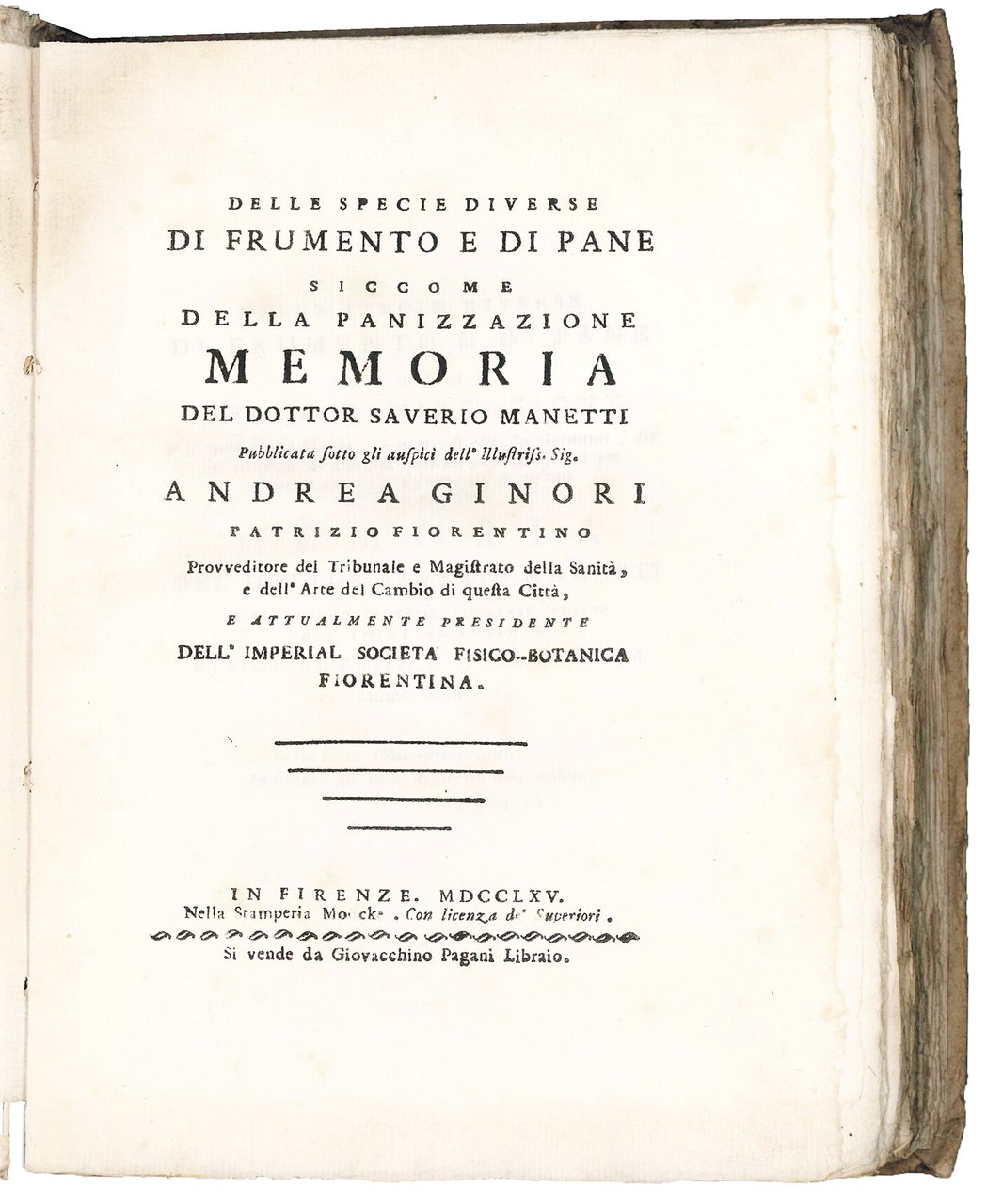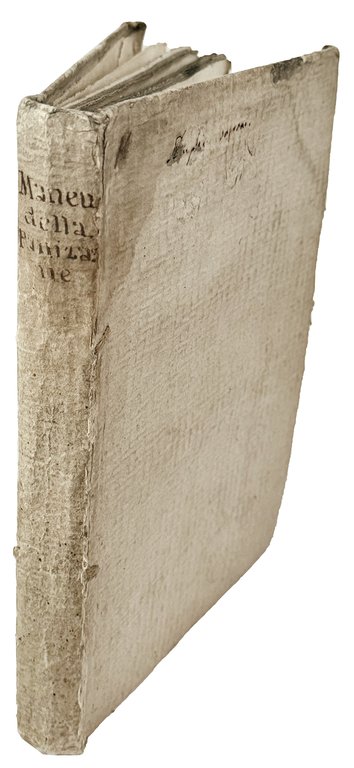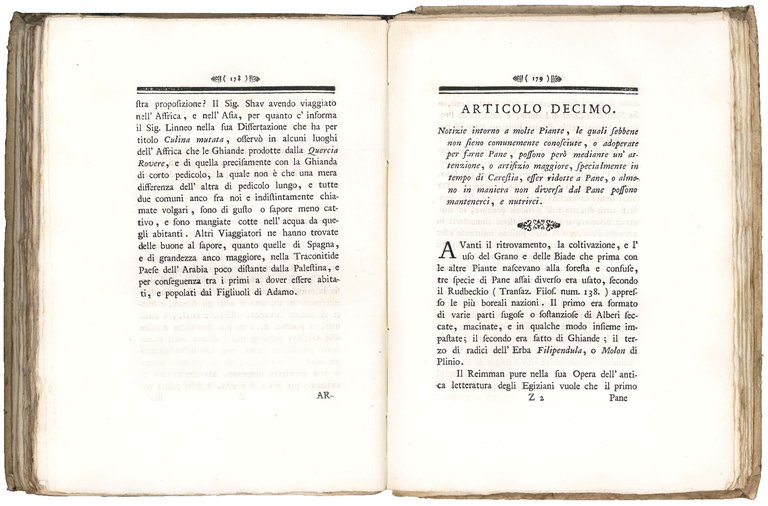


Libri antichi e moderni
MANETTI, Saverio (1723-1785)
Delle specie diverse di frumento e di pane siccome della panizzazione memoria del dottor Saverio Manetti pubblicata sotto gli auspici dell'Illustriss. sSig. Andrea Ginori patrizio fiorentino Provveditore del Tribunale e Magistrato della Sanità, e dell'Arte del Cambio di questa città, e attualmente presidente dell'Imperial Società Fisico-Botanica fiorentina
nella stamperia Moücke. Si vende da Giovacchino Pagani libraio, 1765
1200,00 €
Govi Libreria Antiquaria
(Modena, Italia)
Le corrette spese di spedizione vengono calcolate una volta inserito l’indirizzo di spedizione durante la creazione dell’ordine. A discrezione del Venditore sono disponibili una o più modalità di consegna: Standard, Express, Economy, Ritiro in negozio.
Condizioni di spedizione della Libreria:
Per prodotti con prezzo superiore a 300€ è possibile richiedere un piano rateale a Maremagnum. È possibile effettuare il pagamento con Carta del Docente, 18App, Pubblica Amministrazione.
I tempi di evasione sono stimati in base ai tempi di spedizione della libreria e di consegna da parte del vettore. In caso di fermo doganale, si potrebbero verificare dei ritardi nella consegna. Gli eventuali oneri doganali sono a carico del destinatario.
Clicca per maggiori informazioniMetodi di Pagamento
- PayPal
- Carta di Credito
- Bonifico Bancario
-
-
Scopri come utilizzare
il tuo bonus Carta del Docente -
Scopri come utilizzare
il tuo bonus 18App
Dettagli
Descrizione
First edition (a second edition appeared in Venice in 1766). Saverio Manetti was one of the founders of the Accademia dei Georgofili, the first European agricultural academy, and was deeply involved in agriculture and winemaking studies. His major work in this field was the treatise Delle specie diverse di frumento e di pane (‘On the different species of wheat and bread'), one of the best agronomic texts of the 18th century, which reflects Manetti's botanical and historical-naturalistic interests, but also the issue of the most serious subsistence crisis of the period, that of the years 1763-66, as well as the vital problem of peasant food and urban supply. The text not only describes the various types of wheat available and the changes that had taken place in Tuscan farming practices, but also suggests other types of plants (cereals, legumes, berries) “which share the characteristics of wheat and which, in the absence of bread as a common food, can replace it” (p. 2), and systematically examines other cereal species, such as rye and barley, which are easier to grow in mountainous terrain, can be made into bread, and have high yields; broomcorn, widespread in the Tuscan farming economy also due to its adaptability to difficult soils, “a very common ingredient in the bread of our poorest peasants,” which produced “very dense, black, and heavy bread, suitable for very robust people” (p. 93); legumes (broad beans and vetches), useful as renewal crops and also suitable for bread making, so much so that their flour “would not be unpleasant mixed with wheat, even for the rich”. Manetti then goes on to consider corn and potatoes, which were rarely cultivated in Tuscany, and other less nutritious species, usually used as animal feed, such as oats and millet. Delle specie also provided a picture of the suffering of the population in terrible years, especially during the famine of 1764. Without foreshadowing a transition to capitalist agriculture or the ‘large-scale farming' of the physiocrats, the treatise was nevertheless not just a technical response to the problems caused by poverty and famine, but more broadly explored the potential for improving the farm economy through the intensification of farm work and the managerial role of landowners (cf. R. Pasta, Manetti, Saverio, in: “Dizionario Biografico degli Italiani”, vol. 68, Rome, 2007, s.v.).
Italian Union Catalogue, IT\ICCU\NAPE\006025; Westbury, pp. 138-140.

